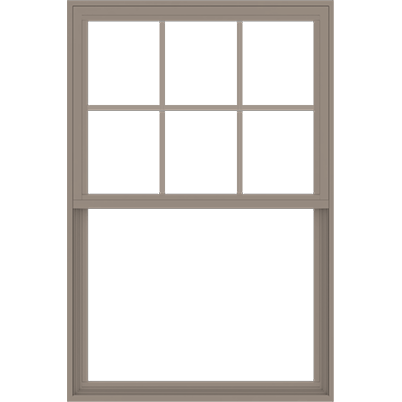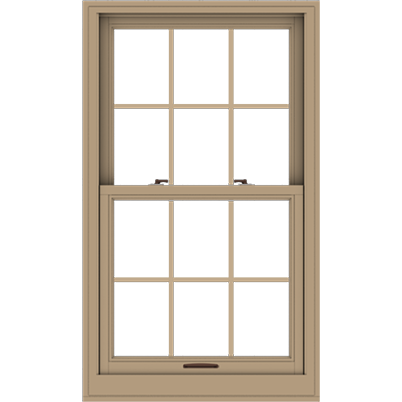Tips
What’s the difference between double-hung windows and single-hung windows?
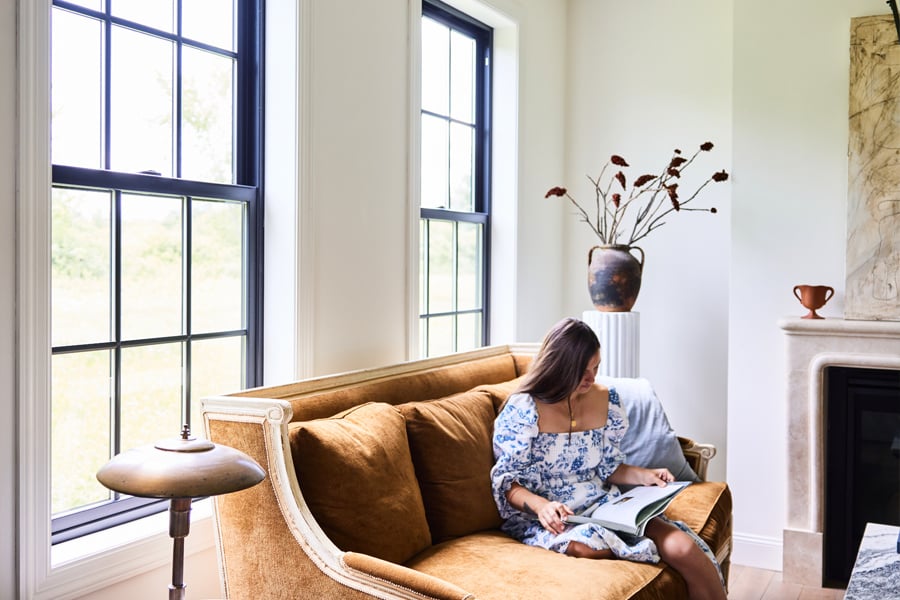
You no doubt recognize these classic windows, even if you’re not familiar with what they’re called. Find out why you might choose a single-hung window over a double-hung window (or vice versa) — plus get the answers to your most frequently asked questions.
What’s the difference between double-hung windows and single-hung windows?
The short answer is that they function differently. Here’s what we mean:
- A double-hung window has two openings. As expected, you can slide the bottom sash up and you can also slide the top sash down. Open just the bottom, just the top, or both ends at once. When both ends are open, it can enable something called circular ventilation — warm air vents out the top while cool air flows in from the bottom.
- A single-hung window has one opening at the bottom. The lower sash slides up to open and the top sash doesn’t move (it’s fixed).
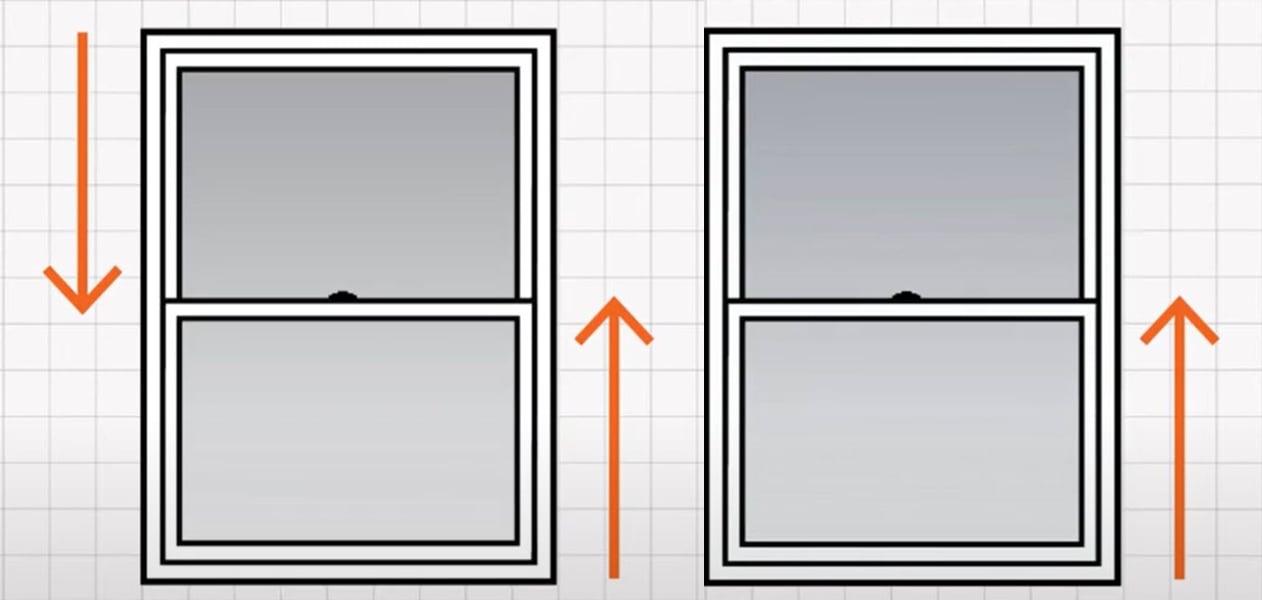
Talk like a pro: What’s a sash?
A sash is the glass and the members framing the glass. Both double-hung and single-hung windows have two vertically stacked sashes.
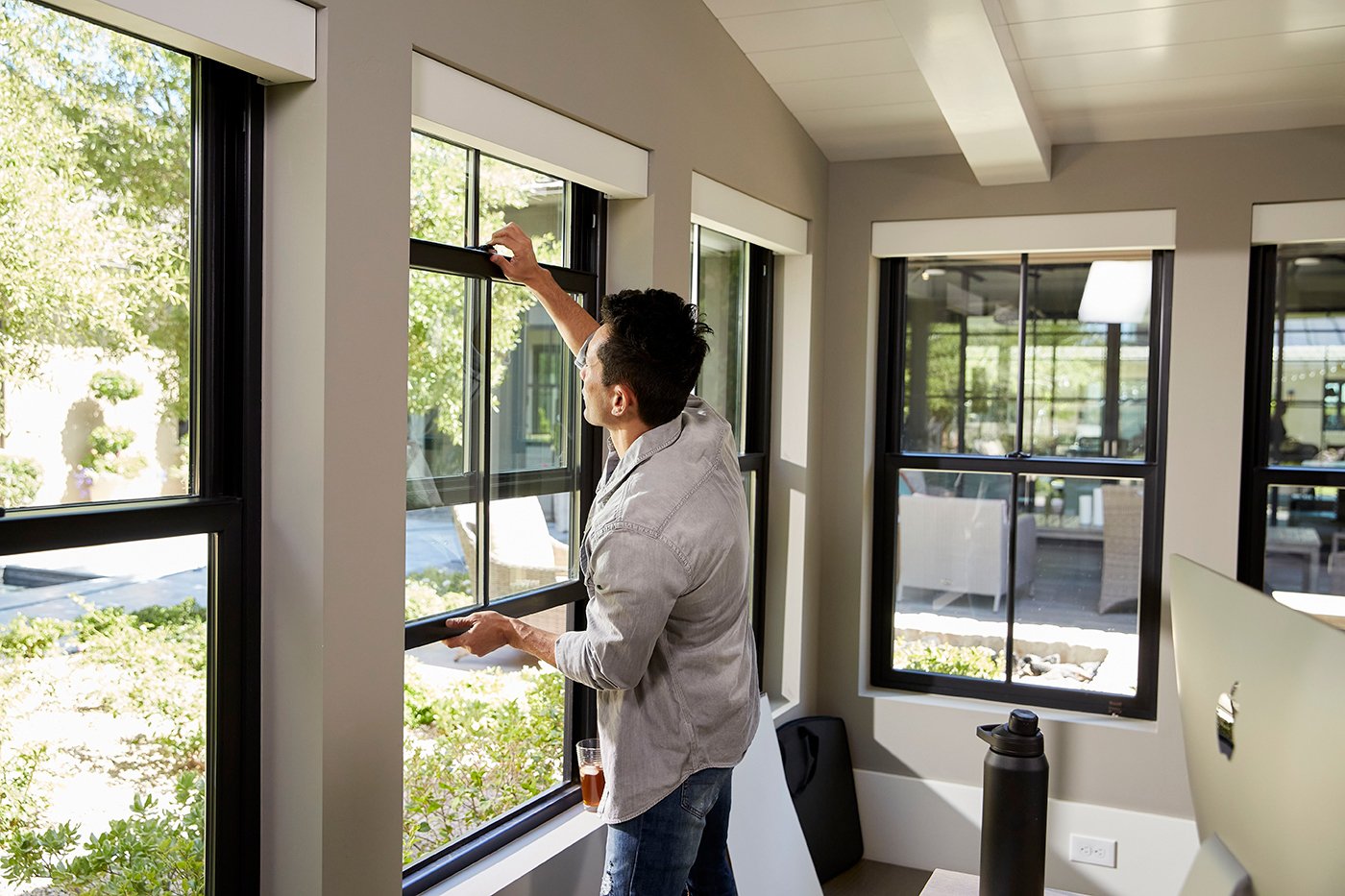
With so many windows in this sunroom, the owners opted for single-hung windows. They didn’t need the option to open the top sash, too. These are 100 Series Single-Hung Windows with specified divided light grilles.
What do double-hung and single-hung windows have in common?
Here's what these windows have in common:
- They both have a timeless aesthetic that looks great on traditional homes — farmhouses, Colonials, Craftsman Bungalows, Cape Cods, and more.
- They open flush to the wall, which makes them ideal next to patios, decks and anywhere else an outward-opening window would obstruct space.
- Both are available in a range of options, so you can find a window that suits your needs in terms of aesthetics, performance, material type, and cost. Additionally, either window will work whether you’re building a new construction home, remodeling, or replacing — there's no wrong choice here! Find out about your options.
With their similar look, it’s easy to mix double-hung and single-hung windows throughout your home, choosing one over the other depending on your needs.
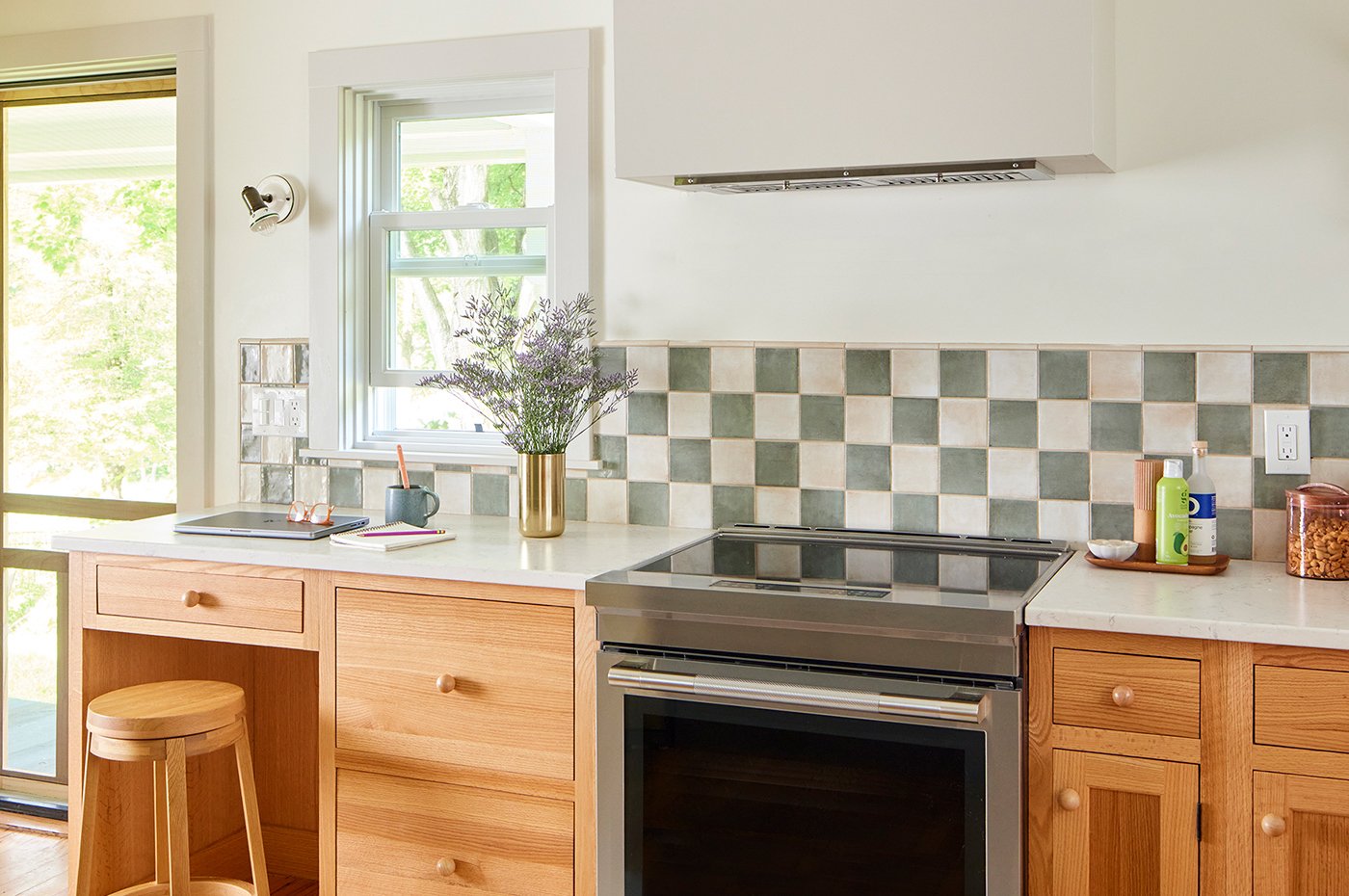
A 200 Series Double-Hung Window makes this cheerful kitchen bright and airy.
What are the advantages of single-hung windows?
In general, single-hung windows are a great fit when you want a classic look and don't need or won’t use the top opening — for example, if it’ll be out of reach.
Here's what they offer over double-hung windows:
- Energy efficiency: With fewer moving parts and features, single-hung windows can help reduce energy loss and improve savings on utility bills.
- Extra peace of mind: 100 Series Single-Hung Windows latch automatically when closed making them a good option in a first-floor bedroom or anywhere else you never want to worry about remembering to lock the windows.
- Lower price: A single-hung window is simpler to construct than a double-hung window. This is reflected in the price. Mixing single- and double-hung windows throughout your home will help you create a cohesive look at a lower price.
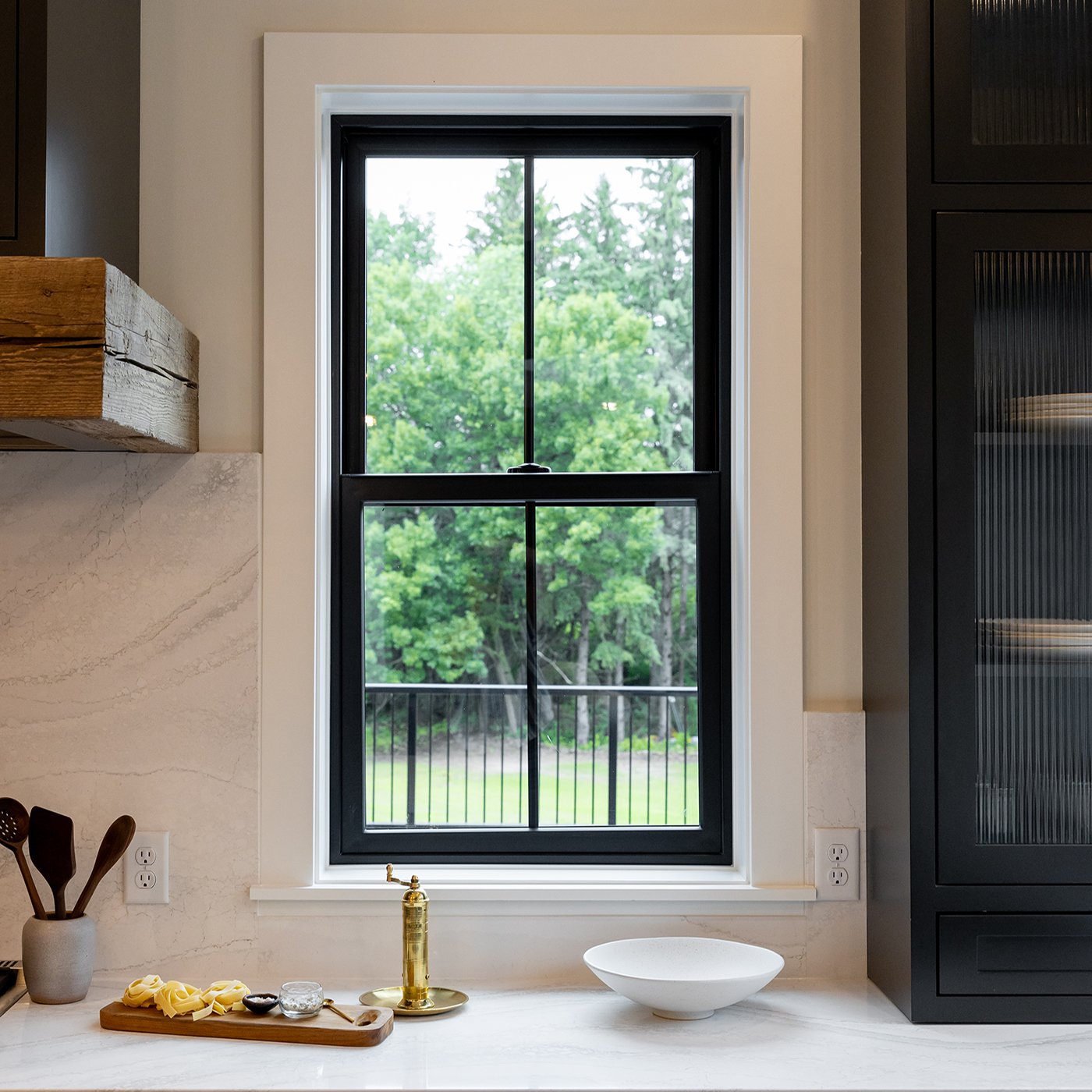
What are the advantages of double-hung windows?
Enjoy the same classic aesthetic with a couple of great advantages. Here’s what double-hung windows have over single-hung windows:
- More fresh air: Bring in lots of fresh air with these flexible windows. With two sashes that open at once, you can choose to open the top sash, bottom sash, or both. In a room with only one window, a double-hung is a great option because it will allow you to vent the hot air that’s risen to the top of the room out of the top opening while cooler air can flow in through the bottom opening.
- Easier cleaning: Maintenance is easier on double-hung windows due to the tilt-wash option, which allows you to clean both the exterior and interior of the window from inside your home — skip the ladder! The tilt-wash feature is standard with double-hung windows across all our product lines.
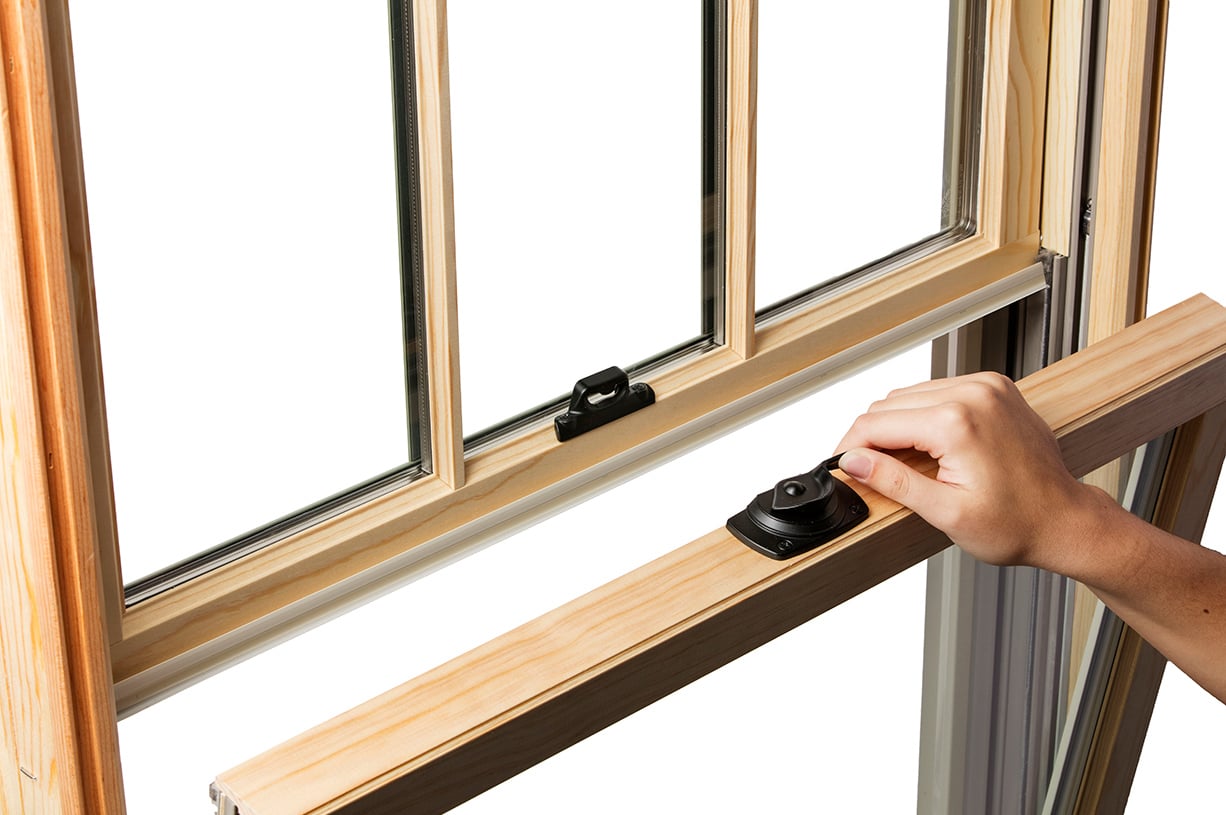
The tilt-wash function is a major benefit of our double-hung windows. Tilting inward allows for easy cleaning. The mechanism that allows this A-Series Double-Hung Window to tilt in is easy to access through the lock.
What customization options are available for double-hung and single-hung windows?
From color to hardware and even sash sizing — your window selections can help you create a look that suits your home’s style. Here’s what you should know about various selections:
Finish
Whether you have your windows factory painted or stained, or your contractor does this work onsite to perfectly match your existing woodwork — color or stain are hugely impactful. Your interior and exterior window color don’t have to be the same either. Did you know that certain colors are associated with certain classic architectural styles? Find out what colors might further your home’s style in our Home Style Library.
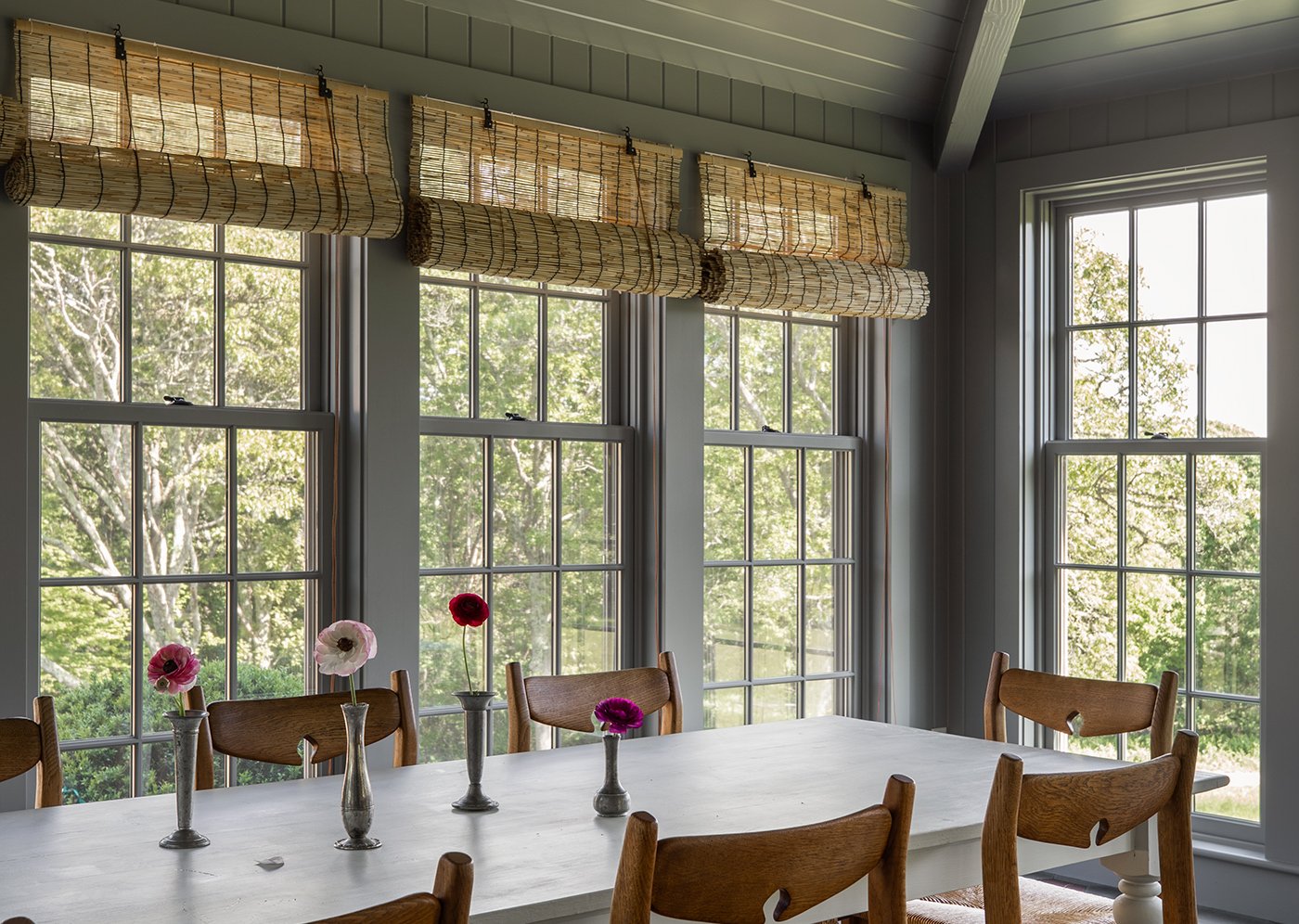
Painting these A-Series Double-Hung Windows to match the walls really makes a statement.
Window shape
Single- and double-hung windows don’t have to be rectangular. You can get one of these windows with a round top — we call this shape Springline™. You’ll also find various arch shapes available as standard offerings. For the most flexibility in shapes, look to our E-Series product line. And if you’re leaning toward another product line, rest assured that the most popular Springline and arch shapes are available through various product lines.
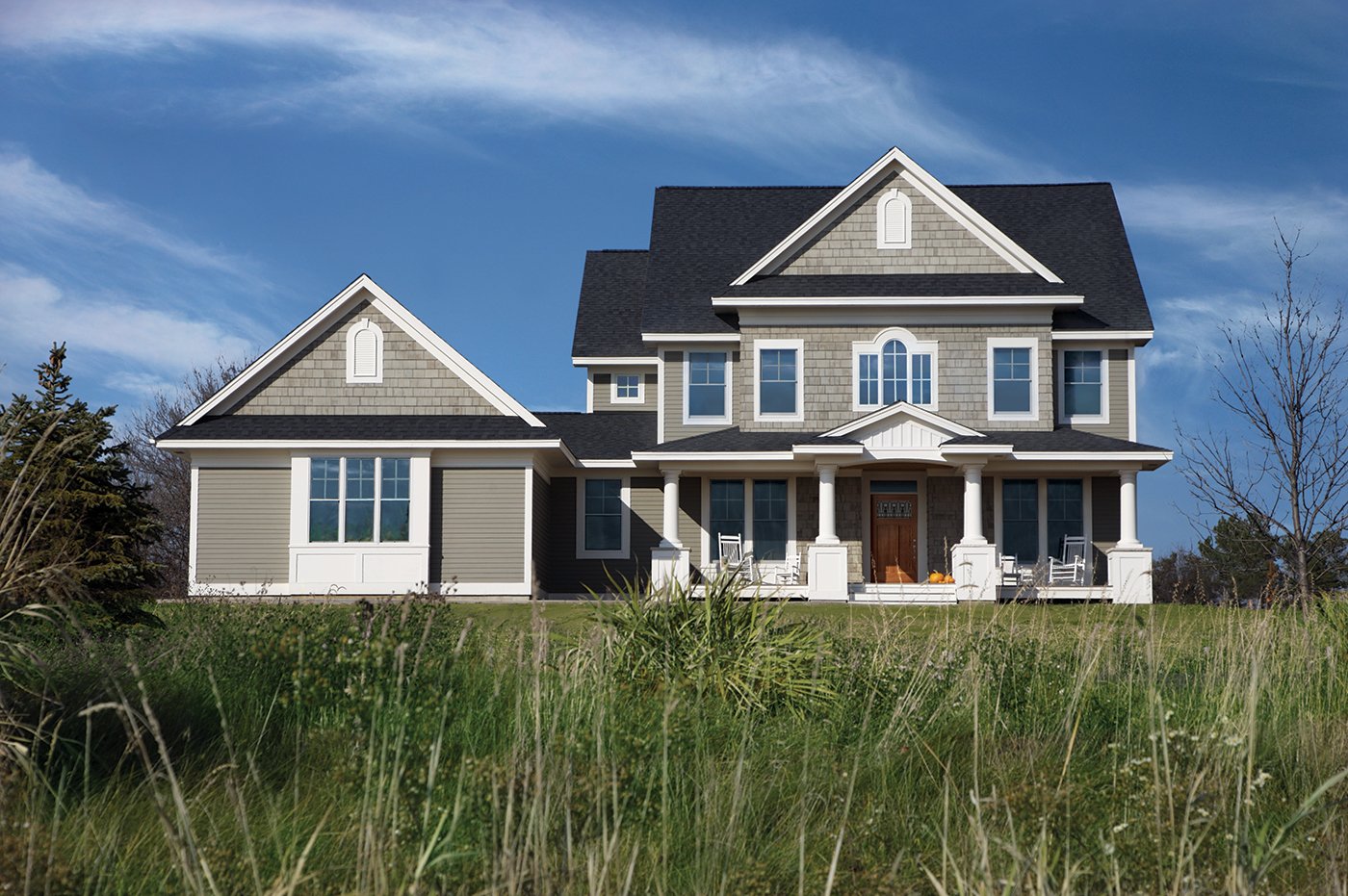
Looking for a double-hung window in an arch or Springline shape(rectangular bottom with a circle top)? These are standard offerings among various product lines. And if you want the most customization options, start with the E-Series product line.
Sash style
This is likely a detail you haven’t considered before, but sash size can be varied so the top and bottom sashes have different heights. While it might seem very subtle, it’s a detail that can add a lot of historic charm, especially on certain traditional home styles, like Cape Cods, for example. A taller bottom sash and shorter top sash is called a cottage sash. We also offer reverse cottage sashes, which are exactly what you’d expect — a shorter bottom sash and longer top sash.
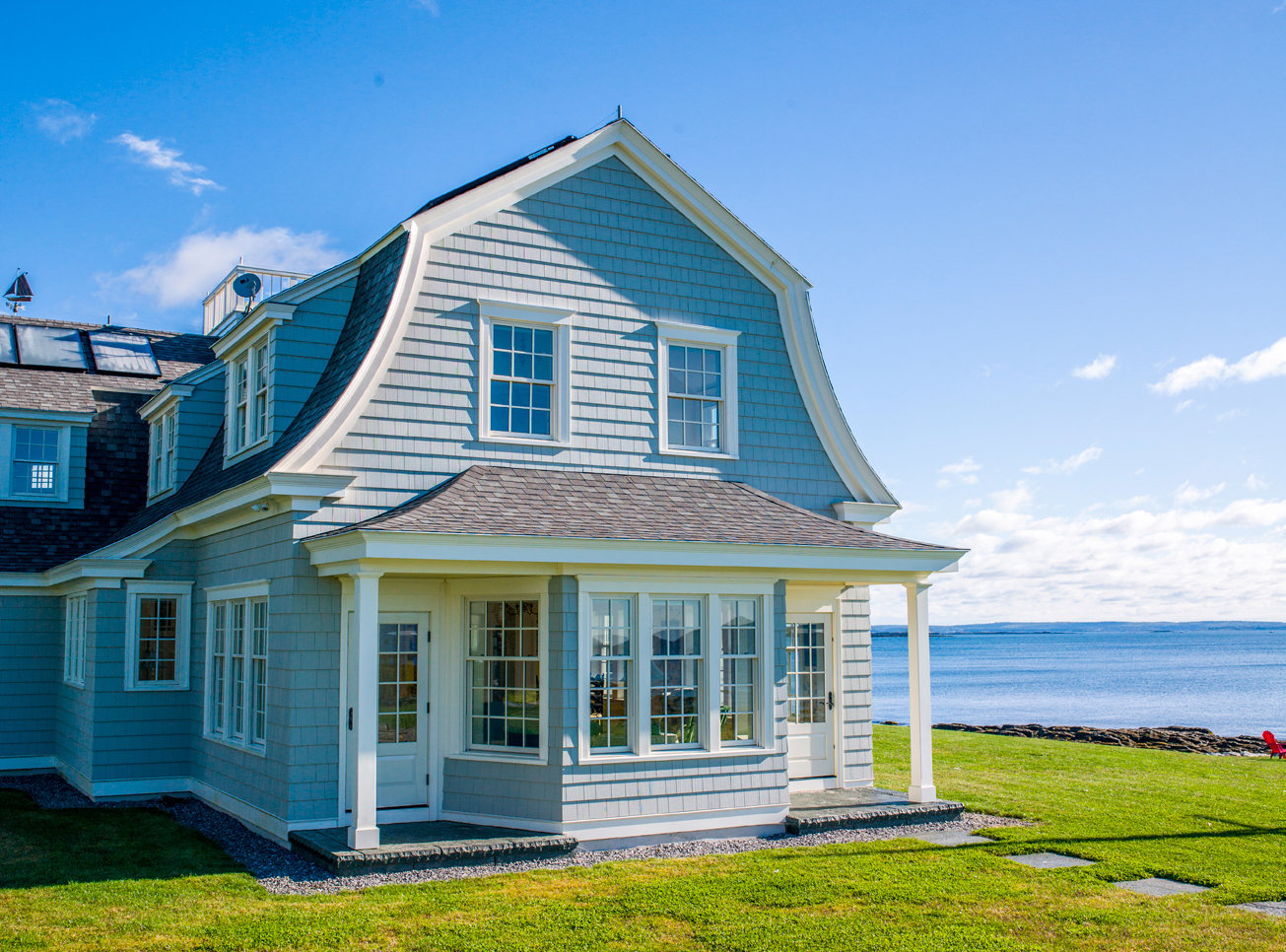
This charming Shingle-style Colonial has E-Series Double-Hung Windows with colonial grilles and cottage sashes (on the first floor). Details like colors, grilles, and sash height can all help establish a home’s style.
Hardware
From the style of the hardware to its finish, don’t overlook this detail! If you want the most traditional look, hardware with more detailing is just right — think curves, ridges, and similar flourishes. While more streamlined, low-profile hardware will suit a look that’s more modern or transitional — a contemporary take on traditional style. As for finishes, bright metals that contrast with the window and create a more pronounced look will feel more traditional. Finishes that blend in with the window feel more modern.
Are single-hung windows or double-hung windows better for a replacement?
Either a double-hung window or single-hung window could work well in a replacement scenario. Here are a few replacement options to know about:
- 100 Series Single-Hung Windows: Either the type of window used in a new construction home, or our 100 Series Single-Hung Insert Replacement Windows might work for your project. An insert replacement window can be installed when conditions are right and is a good option when you’re seeking minimal disruption as these windows can be installed without replacing trim.
- 400 Series Woodwright Double-Hung Window: Our best-selling 400 Series product line has a replacement offering that’s specially made for historic or traditional-style homes, the Woodwright Double-Hung Window has a wood interior and composite exterior made of our Fibrex® material. This means the wood can be painted or stained to match your existing woodwork while giving you a low-maintenance exterior.
Your double-hung and single-hung window FAQs answered
How much does it cost to install a single-hung or double-hung window?
The cost of installing a single-hung or double-hung window will depend on factors like the complexity of the project, the cost of labor in your area, and more. Ready for more details? Start understanding window costs or get an estimate for your unique project by requesting a quote.
Do single-hung windows tilt in for cleaning?
No, single-hung windows don’t tilt in for cleaning. The tilt-wash feature is unique to our double-hung windows. Find this feature on all our double-hung windows.
Can I replace a single-hung window with a double-hung window?
Yes! It’s typically not an issue to replace a single-hung window with a double-hung window. Your contractor can help you work through ordering the correct size replacement window. Don’t have a contractor? We can help you find a local contractor who specializes in Andersen® products.
Do double-hung windows require more maintenance?
Both sashes on a double-hung window move. This means there are parts and pieces in both that could require maintenance over time. Some windows, like our 400 Series Double-Hung Windows have compression jamb liners that are easy to remove for maintenance. However, if you don't need a moveable top sash, the simplest solution is probably to select a single-hung window. With a fixed top sash, there are half as many moving parts and pieces to maintain.
How do I maintain single-hung windows and double-hung windows for longevity?
To keep your windows in top condition for years to come, here are some recommendations for care:
- Check for sealant on the exterior of your window to make sure it’s intact.
- Keep your interior sill clean.
- Clean the window glass regularly — get our expert tips on how to clean windows.
- Occasionally remove lock and keepers for a more thorough cleaning.
- Check weatherstripping, watching out for missing pieces as well as compression and/or peeling.
You can find cleaning and maintenance information for your window product in the Andersen Help Center.
How do materials impact the efficiency and durability of single-hung windows and double-hung windows?
No matter which product line you select, our windows are energy efficient and durable. This is achieved through a combination of design and using the right materials in the right places, here’s what we mean:
- Our clad-wood windows: These are windows made of a wood core and a durable material that protects their exterior. Our clad window lines include: the A-Series with a composite cladding, E-Series with an extruded aluminum cladding, and 400 Series and 200 Series which both have vinyl claddings.
- Our composite windows: The 100 Series Single-Hung Window is made of our trademarked Fibrex® material — a composite that’s twice as strong as vinyl.
- Thermally broken designs: No matter if you choose a 100 Series Single-Hung Window or one of our clad-wood double-hung windows, all of our windows are thermally broken. This means energy will not be transferred between the indoors and outdoors — keeping air conditioning and heating in your house and preventing the hot or cold air outside from transferring inside.
- Energy-efficient window glass: Ours come with some standard features that improve energy efficiency, including dual-pane construction and low-emissivity coatings. In addition, triple-pane glass is available with A-Series Double-Hung and E-Series Double-Hung Windows as well as 400-Series Double-Hung Windows in select geographic locations.
Want to understand more about materials? Ready to understand more about how to make window selections that improve energy efficiency?

